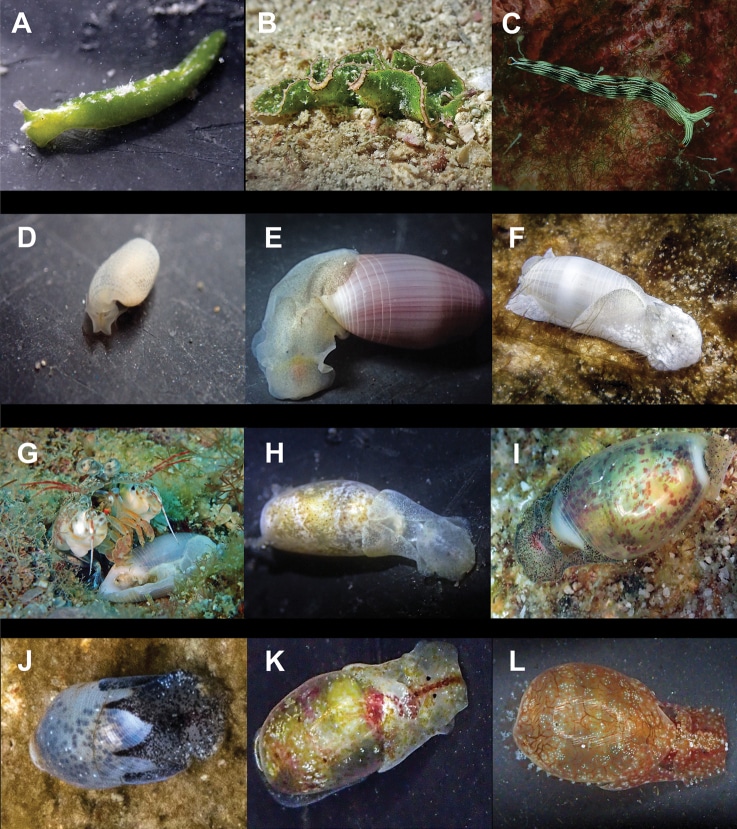An extensive 14-year study using benthic surveys and photographic records has revealed a stunning richness of sea slug diversity around the island of Koh Tao, Thailand. A staggering 191 distinct species across the orders Sacoglossa (14 species), Cephalaspidea (23 species), Aplysiida (5 species), Pleurobranchida (3 species), and Nudibranchia (146 species). Among these, seven species are the first of their kind reported in the Gulf of Thailand, while an additional 115 species represent the first records for Thailand as per current literature.
These findings have arisen through the dedication and hard work of many citizen science divers, enthusiasts, and local photographers under the direction of Dr. Rahul Mehrortra. Rahul worked for many years with the New Heaven Reef Conservation Program, was a founding board member of Conservation Diver, and then started his center, the Aow Thai Marine Ecology Center (ATMEC), in partnership with the Love Wildlife Foundation.
Over more than a decade, he has led many studies resulting in eight scientific publications to date:
- Predation on a sacoglossan gastropod by a mushroom coral. R Mehrotra, CM Scott, JM Rohrer, BW Hoeksema – Coral Reefs, 2015
- Species inventory of sea slugs (Gastropoda: Heterobranchia) for Koh Tao, Thailand, with 25 first records for Thai waters. R Mehrotra, CM Scott – Marine Biodiversity, 2016.
- On the genus Armina (Gastropoda: Heterobranchia: Nudibranchia) in Thailand. R Mehrotra, M Caballer Gutierrez, S Chavanich – Marine Biodiversity, 2017
- Selective consumption of sacoglossan sea slugs (Mollusca: Gastropoda) by scleractinian corals (Cnidaria: Anthozoa). R Mehrotra, C Monchanin, CM Scott, N Phongsuwan… – PLoS One, 2019
- The formerly enigmatic Unidentiidae in the limelight again: a new species of the genus Unidentia from Thailand (Gastropoda: Nudibranchia). T Korshunova, R Mehrotra, S Arnold, K Lundin… – Zootaxa, 2019
- A new species of coral-feeding nudibranch (Mollusca: Gastropoda) from the Gulf of Thailand. R Mehrotra, S Arnold, A Wang, S Chavanich… – Marine Biodiversity, 2020
- On the Plakobranchidae (Gastropoda, Sacoglossa) from soft sediment habitats of Koh Tao, Gulf of Thailand, with descriptions of two new species. R Mehrotra, MC Gutiérrez, CM Scott, S Arnold… – ZooKeys, 2020
- An updated inventory of sea slugs from Koh Tao, Thailand, with notes on their ecology and a dramatic biodiversity increase for Thai waters. R Mehrotra, MAC Gutiérrez, CM Scott, S Arnold… – ZooKeys, 2021



A Rich Biodiversity of sea slugs
The abundance of species diversity for an island of Koh Tao’s size is unusually high. Yet, these studies have shown that most species were sighted infrequently and often had limited geographic ranges, highlighting the need for continued surveying and monitoring. Significantly, many species were discovered in non-reef areas, indicating that these regions harbor greater biodiversity than previously understood. This suggests the potential for promoting non-coral reef tourism, particularly as the local coral reefs face threats from overuse by SCUBA divers.
New Species Descriptions
In addition to the wider study of sea slug diversity, several focused studies were conducted. The Indo-Pacific genus Phestilla, which has been a subject of ongoing taxonomic debate, was re-evaluated. A previously unknown species of Phestilla was discovered feeding on Pavona explanulata, a coral species, in Koh Tao. This observation sparked a fresh discussion about this genus’s position, and the ecological implications of its coral-parasitic behavior.
Finally, the sea slug heterobranch fauna of Thailand, with a total of 191 species, has seen an intriguing development. Two new species of the genus Armina were discovered in Thailand, distinct from the only previously recorded Armina semperi. Armina scotti, and Armina occulta. are described in detail, highlighting their unique morphological features and contributing to our understanding of the complex and diverse world of sea slugs.
New Understanding Of Trophic Functions
Another study unveiled the surprising revelation that some reef corals consume sea slugs. The feeding trials involved six species of sacoglossan sea slugs and four species of solitary corals. The results showed significant differences in both the time of ingestion and consumption state among the different sea slug species. Prey size was a crucial factor, with larger prey being ingested more slowly and rarely than smaller ones. This study paves the way for a deeper understanding of coral diet, highlighting the significant differences between opportunistic prey capture and actual predation events.
A Diverse Hot-spot for Sea Slugs
These studies shed light on the overlooked richness of marine biodiversity in non-reef areas and underscore the importance of continuous exploration and research in understanding and preserving marine life around Koh Tao and beyond. The constant evolution of taxonomy and species reclassification demands consistent monitoring and updated records, thereby setting the stage for a more comprehensive and accurate understanding of marine biodiversity.
